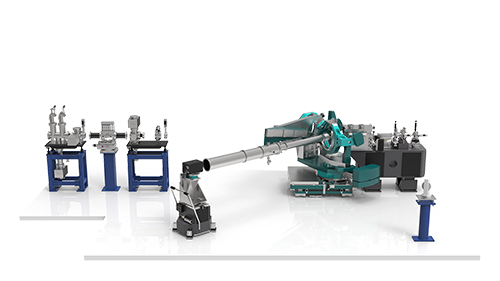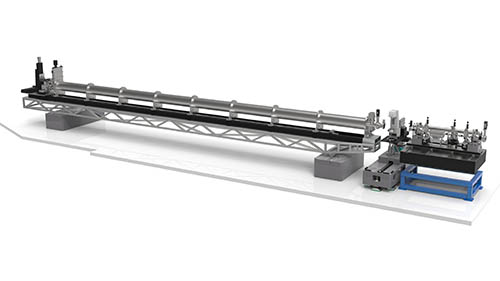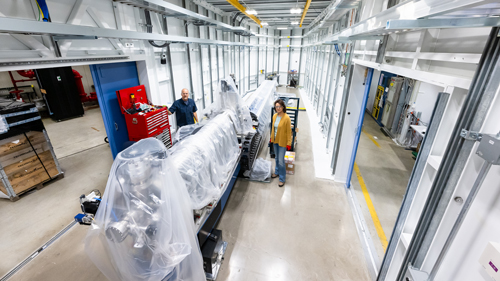| Techniques | Wide-angle and small-angle X-ray photon correlation spectroscopy |
| Photon beam energy | 8-25 keV |
| X-ray spot size | 8-ID-E: 0.3 to 3 μm; 8-ID-I: 3-10 μm |

Observing the structural properties of materials is just one part of creating more useful products for everyday use.
Scientists are increasingly interested in the dynamics of those materials – how the systems that comprise them behave and change, particularly in response to environmental factors. These studies can lead to everything from energy-efficient tires for vehicles to strong yet flexible synthetic cartilage for prosthetics.
The X-ray Photon Correlation Spectroscopy (XPCS) beamline at 8-ID of the Advanced Photon Source (APS) will specialize in the dynamics of liquids, gels, glasses and quantum materials. The beamline is optimized to enable research into both hard and soft matter and will make use of the novel technique it is named after to examine the dynamics of samples over time.
XPCS is designed to take advantage of the increased coherence of the upgraded APS X-ray beam. Scattering the X-ray beam off a sample over a designated time period allows scientists to examine the way that sample relaxes, diffuses or changes over that period. If researchers want to create a more resilient glass, for instance, they can apply pressure to that glass and then use XPCS to examine how quickly the atoms return to their original state.
The new 8-ID beamline will contain three new stations: one for optics (8-ID-D) and two experiment stations. 8-ID-E will be optimized for wide-angle XPCS, while 8-ID-I will be geared toward small- and medium-angle XPCS. Each station will include new mechanisms to alter the length scale – from micrometers to the atomic level – and the time scale, down to microseconds. The two stations will operate one at a time.

In practical terms, the small-angle XPCS station will enable scientists to probe the interfaces of solids and fluids to study new ways to clear toxic metals and other impurities from water, explore drug delivery mechanisms and enhance the energy storage capacity of batteries. The wide-angle XPCS station will enable studies into quantum materials that lead to exotic new properties (such as superconductivity and magnetism) that will be used for future microelectronics or quantum computing. The wide-angle XPCS will allow us to understand how these materials work in devices and tell us how to improve the way we synthesize and use them. Examining the dynamics of these materials at the time and length scales necessary to truly understand them has been impossible up to now.
The capabilities of the XPCS beamline are possible due to the increased brightness and coherence of the upgraded APS X-ray beam. This convergence of beam power and instruments has been one that the scientific community has been anticipating for some time, and the discoveries that will come from it will not only change the study of materials dynamics but will change our daily lives.

BEAMLINE CONTACT:
Suresh Narayanan, [email protected]
